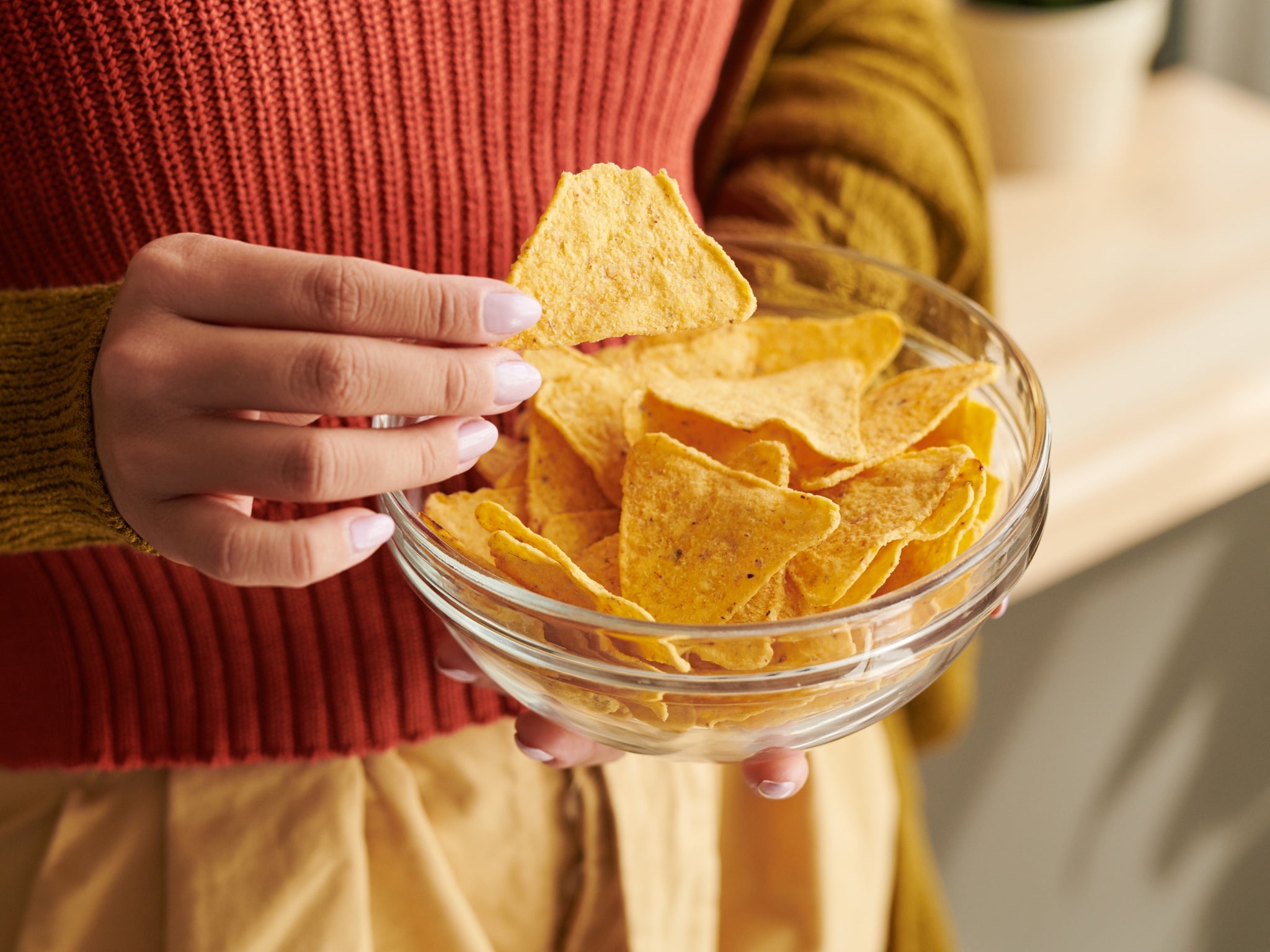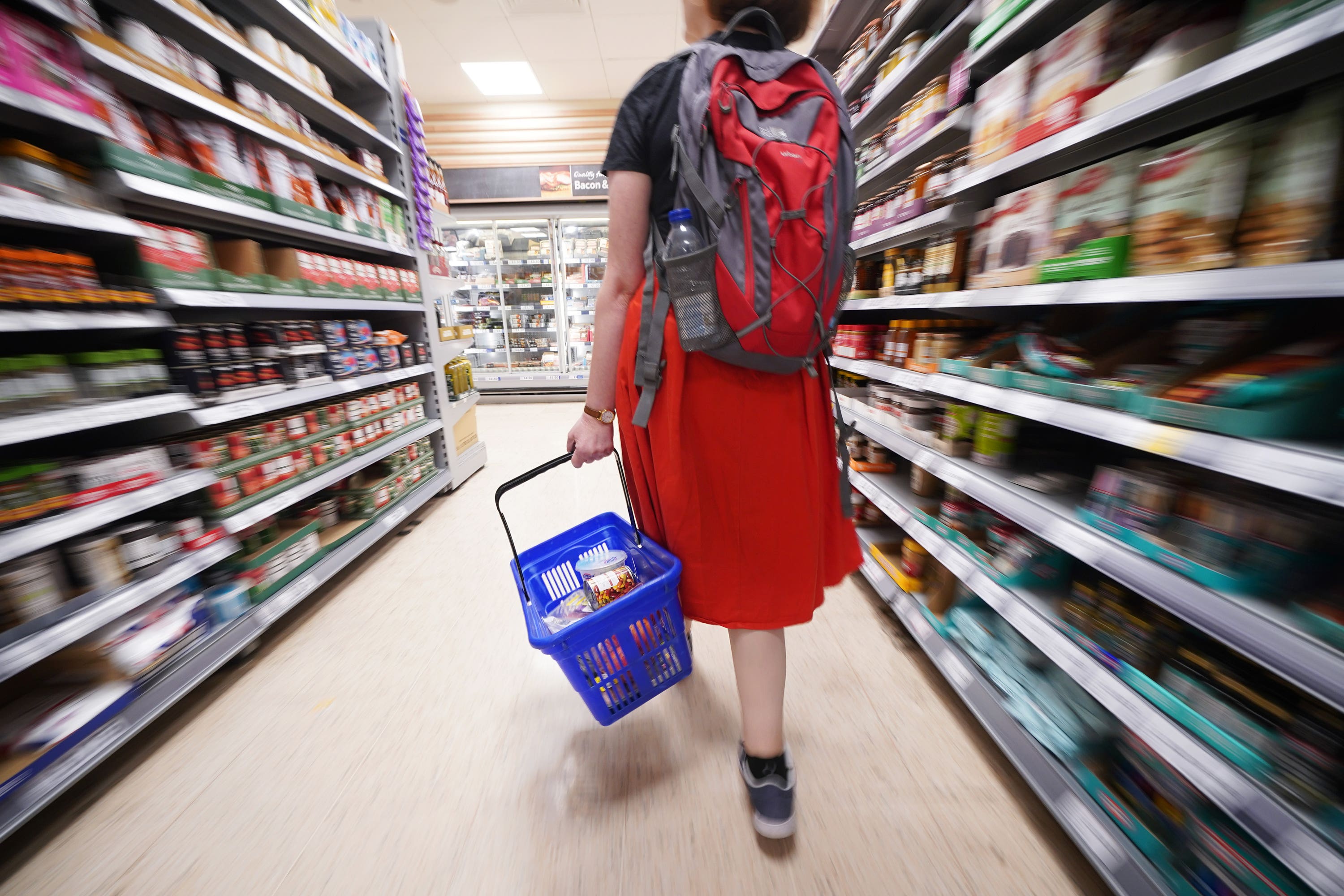Potatoes up but crisps down: How inflation has changed the price of everyday groceries
The cost of eating out in restaurants eased back

UK inflation fell to a fresh low of nearly two-and-a-half years last month thanks to a sharp slowdown in price rises for food.
The data from the Office for National Statistics (ONS) shows annual food price inflation fell to its lowest level for two years, at 5% in February.
The cost of eating out in restaurants and cafes also eased back, with the annual rate of inflation falling to 6.7% last month from 8.2% in January.
A growing number of household items are recording a slowing in the rate of inflation, while some products have seen prices fall compared with a year ago, according to the figures.
There have been sharp slowdowns in the average price of eggs, which rose by 3.2% in the year to February compared with a jump of 7.2% in the year to January; crisps (up by 6.2% in February compared with 10.8% in January); yoghurt (up 6.5% compared with 9.9%); tea (up 7.2% compared with 10.6%) and pizza and quiche (up 1% compared with 4%).

Away from groceries, the average cost of cookers rose by just 0.2% in the year to February, down from an annual rise of 5.6% in January; fabrics and curtains were up 6.2% compared with 9.1% in January; and men’s footwear was up 2.7% versus 5%.
A number of products are now recording negative inflation – in other words, prices are falling year-on-year.
The average cost of whole milk was down 10.2% in the year to February, a slightly larger fall than the drop of 10% in January, while low-fat milk fell by 6.6%, compared with a decrease of 6.1% in January, according to the Consumer Prices Index (CPI) data published by the ONS.
Butter was down 7.6% last month, similar to the fall of 7.8% in January, while second-hand cars fell by 7.3%, a steeper drop than 5.9% the previous month.
Cheese and curd fell in price by 0.3% in the year to February, following a rise of 2.5% in January.
Petrol continues to be cheaper than it was a year ago, though the drop in the year to February, down 3.9%, was smaller than the 6.4% decrease in January, reflecting the recent rise in prices at the pumps.
The same trend applies to diesel, with a smaller year-on-year drop in February (down 10.8%) compared with January (down 13.8%).
Inflation is still accelerating in some areas, however – for example, potatoes rose in price by 8.5% in the year to February, compared with 7.1% in January, while the average cost of going to the cinema, theatre or a concert was up by 8.5%, compared with 6.9% in January.
Below is a list of examples of how the CPI inflation rate has either slowed or accelerated.
Two figures are listed for each item: the average rise in price in the 12 months to January, followed by the average rise in price in the 12 months to February.
– Examples where inflation has slowed, ranked by the size of the change:
Fresh or chilled fish: Jan up 5.2%, Feb up 0.3%
Crisps: Jan 10.8%, Feb 6.2%
Fruit & vegetable juices: Jan 12.2%, Feb 7.7%
Eggs: Jan 7.2%, Feb 3.2%
Yoghurt: Jan 9.9%, Feb 6.5%
Tea: Jan 10.6%, Feb 7.2%
Sauces, condiments & culinary herbs: Jan 11.5%, Feb 8.2%
Pizza & quiche: Jan 4%, Feb 1%
Fresh or chilled vegetables other than potatoes: Jan 9.4%, Feb 6.5%
Rice: Jan 6.4%, Feb 3.9%
Fresh or chilled fruit: Jan 6.6%, Feb 4.3%
Men’s shoes: Jan 5%, Feb 2.7%
Products for pets: Jan 3.9%, Feb 1.8%
Pasta products & couscous: Jan 10.8%, Feb 8.9%
Children’s clothes: Jan 7.4%, Feb 5.7%
Breakfast cereals: Jan 8.7%, Feb 7.1%
Restaurants & cafes: Jan 8.2%, Feb 6.7%
Men’s clothes: Jan 4.6%, Feb 3.3%
Soft drinks: Jan 3.6%, Feb 2.4%
Ready-made meals: Jan 5.2%, Feb 4.1%
Bread: Jan 2.1%, Feb 1%
Women’s shoes: Jan 1.3%, Feb 0.4%
– Examples where inflation has accelerated:
Carpets and rugs: Jan 0.2%, Feb 2.3%
Cinemas, theatres, concerts: Jan 6.9%, Feb 8.5%
Potatoes: Jan 7.1%, Feb 8.5%
Hotels, motels and inns: Jan 3.5%, Feb 4.5%
Women’s clothes: Jan 6.6%, Feb 7.1%